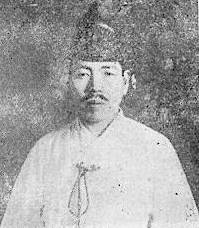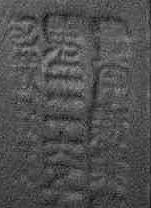
FUJIWARA KANEFUSA
23rd Generation


 The Kanefusa lineage of swordsmiths of Mino Province dates back to the Muromachi era in the 1400's. The 23rd generation Kanefusa
worked during the WW II era and was a direct descendant of this famous line of swordsmiths. This lineage continues today with the 25th generation Kanefusa. The 23rd generation Kanefusa's name was Kato Koichi. He was born in 1900. During the Showa period he studied under Kato Jumyo and worked in Seki (Mino / modern Gifu prefecture). During the war years he made many blades for the
military, both army and navy, and for civil officials. He won numerous awards in sword exhibitions and contests during this period.
He was ranked 1st Seat (National Swordsmith) in the 6th Exhibition of Swords held in 1941 (Slough).
He was ranked Kibin no Retsu in 1942 by Kurihara Hikosaburo at the Tosho Banzuke (J.Kim).
Many of his blades are signed as being prize winning blades. Blades by the 23rd generation Kanefusa have received origami
from the NBTHK or NTHK. This school of swordsmiths is noted for making a special
style of hamon known as "Kanefusa midare".
The Kanefusa lineage of swordsmiths of Mino Province dates back to the Muromachi era in the 1400's. The 23rd generation Kanefusa
worked during the WW II era and was a direct descendant of this famous line of swordsmiths. This lineage continues today with the 25th generation Kanefusa. The 23rd generation Kanefusa's name was Kato Koichi. He was born in 1900. During the Showa period he studied under Kato Jumyo and worked in Seki (Mino / modern Gifu prefecture). During the war years he made many blades for the
military, both army and navy, and for civil officials. He won numerous awards in sword exhibitions and contests during this period.
He was ranked 1st Seat (National Swordsmith) in the 6th Exhibition of Swords held in 1941 (Slough).
He was ranked Kibin no Retsu in 1942 by Kurihara Hikosaburo at the Tosho Banzuke (J.Kim).
Many of his blades are signed as being prize winning blades. Blades by the 23rd generation Kanefusa have received origami
from the NBTHK or NTHK. This school of swordsmiths is noted for making a special
style of hamon known as "Kanefusa midare".
Among signatures on the 23rd Generation Kanefusa blades are:
 Some blades bear inscriptions about awards or being prize winning blades. Sho or Seki tang stamps may appear on the nakago. Some of his blades were signed nakirishi mei. He forged both traditionally made gendaito and non-traditionally made showato using mill steel, thus each blade must be judged on its own merits. Kanefusa blades are found mounted in shin-gunto (army) or kai-gunto (navy) koshirae and shirasaya. The 23rd generation Kanefusa is listed in the Toko Taikan, in Hawley's
Japanese Swordsmiths, and the Nihonto Meikan.
Some blades bear inscriptions about awards or being prize winning blades. Sho or Seki tang stamps may appear on the nakago. Some of his blades were signed nakirishi mei. He forged both traditionally made gendaito and non-traditionally made showato using mill steel, thus each blade must be judged on its own merits. Kanefusa blades are found mounted in shin-gunto (army) or kai-gunto (navy) koshirae and shirasaya. The 23rd generation Kanefusa is listed in the Toko Taikan, in Hawley's
Japanese Swordsmiths, and the Nihonto Meikan.
Rare tang stamp (right) on nakago of a 23rd Gen. Kanefusa blade. Believed to read: "Registration of practical design #211689. Wrapped steel forging blade" (Jitsuyo Shinaan Toroku, Dai 211689 Go, Hotetsu Tanren Toin)
|
Oshigata courtesy of Ron Polansky.
Thanks to Jinsoo Kim and John Slough for information on Kanefusa.
Thanks to Phillip Bell for the kikusui mon photo.
Photo from Dai Nihon Token Shoko Meikan (pub. 1942) courtesy of Jinsoo Kim
|
Gendai | Jumei Tosho | Origami | Flaws | Polearms | Tsuba | Logos | Real? | Clubs | Books | Events | Listservs | Kanji | Sageo Nakirishi Mei | Measure | NBTHK | FAQ | Sinclaire | Articles | Sword Sites | Japan Sites | Martial Arts | World Swords Yoshichika | Kanefusa | Kanezane | Teruhide | Koa Isshin | Nagamitsu | Emura | Tanto | Yoshimichi | Yasunori | Shigetsugu |